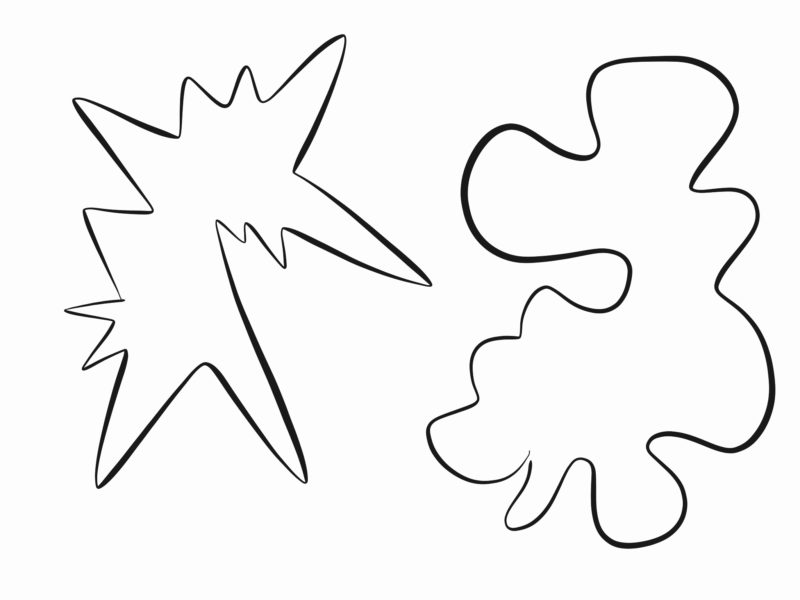Not, as the title might suggest, because he is a narcissistic arse who seeks to demoralise his foes and shame his friends one undulation at a time. His costume is a construct designed to closely adhere to the physical representation of the Platonic Form that Superman is: a bulging powerhouse. Coincidentally, this is exactly what a sonnet is not.
But there are some similarities. The form is representative of a certain type of power. You can see with a glance the topology of the work. There are no meandering stanzas of arbitrary length, no questioning the finality of the white space past the fourteenth line*. Whatever the sonnet’s here to do will be done before you can turn the page. To borrow from (Adam West’s) Batman: kapow!
There is, however, an inversion here: the sonnet’s form is giving the piece its power, whereas Superman is still a Titan when he’s typing as Clark Kent. Undress a sonnet and the power disperses. Why? Let’s talk elements. We’re carbon based lifeforms; mind is an epiphenomenon of an embodied (carbon based) brain; words — language — are a product of mind; metaphorical geological forces in the form of a sonnet applied to the metaphorical carbon atoms of expressed thought produce metaphorical diamond, later cut and polished by that same mind to produce reflective — rhyming — facets and axes of symmetry. Without the compression of the sonnet form, the small but potent revelation becomes a breccia, a scree slope, a sand castle. Not unpleasant in themselves, but some things in art need a keener edge.
We can’t talk about purity in poetry, and the mention of quality is discouraged, so let’s talk inclusions. A diamond’s value will drop the more inclusions it has. Minor inclusions are not visible to the naked eye; you need a trained poet to spot them. Some inclusions are syngenetic, that is, formed when the diamond was being made. Some natural imperfections can’t be avoided, such as those that result from the consonant / vowel distribution across words of a given language and the approximate nature of their phonemes. Experience how the grass and the roof change from the north to the south of England, and how the roof becomes a Dach upon the continent. But some inclusions arise because they leech in from extraneous material. There’s no fifteenth line of a sonnet*; the form demands more focus. Some inclusions are epigenetic: a scratch, a facet too many, a fracture. Inclusions that occur in the cut and polish. A rhyme can’t be maintained or, in a modern sonnet, sufficiently avoided. The volta, the turn, usually found in line nine, is missed. A quick reworking to Shakespearean and a turn on line thirteen, the start of the rhyming couplet, but now there are three quatrains where once was an octave and a sestet and your fine stone turns to coal.
Why bother with the form at all? Artistic expression should be as free as possible, unbounded, not subject to pull, massless, able to drift from the earth like a liberated atmosphere leaving us Mars like, Martian. Superman’s job would be so much easier.
The sonnet can have the power of the philosophical essay, the potential for thesis and antithesis, the drama of obfuscation and revelation — as all poetry can — but amplified for the demands it places upon the poet. Superman needs those sculpted pants in order to differentiate him from every other athletic Caucasian male: the (super)man demands the form. The sonnet is different from other poems by virtue of the form it’s given. Superman just happens to be great; a sonnet must make greatness happen.
* There are some sonnets of irregular length, for example Gerard Manley Hopkins curtal sonnets (12.5 lines) and George Meredith’s Modern Love sonnet sequence (16 lines). If you’re inclined to pedantry, change the above text to “no questioning the finality of the white space past the nth line” and “There’s no n+1 line of a sonnet”, where n is the length of the sonnet you were shouting out as a counter example.




